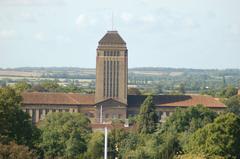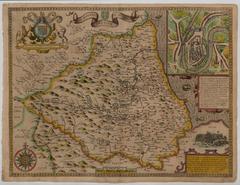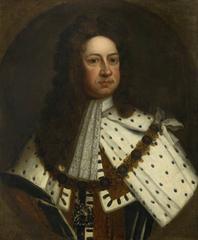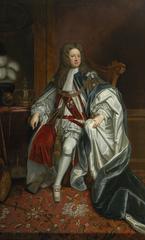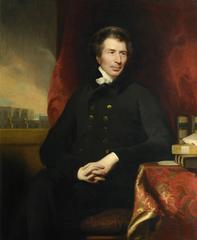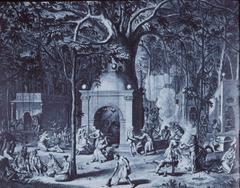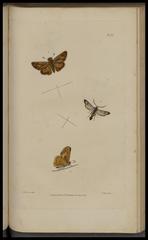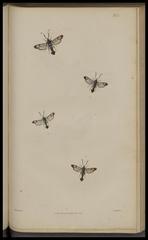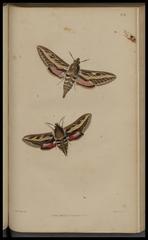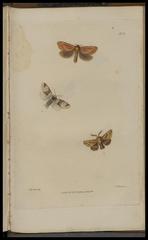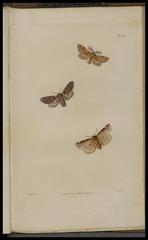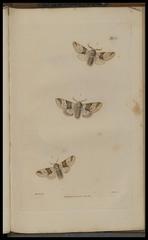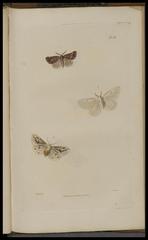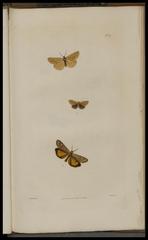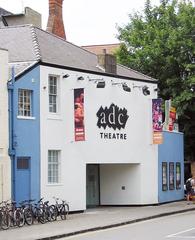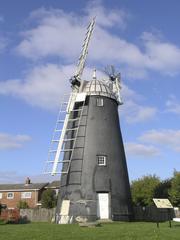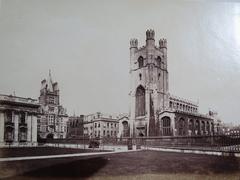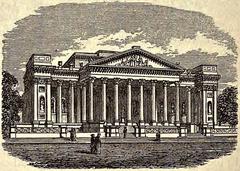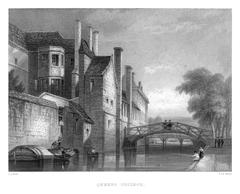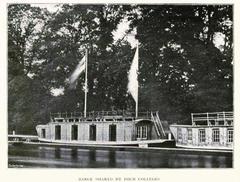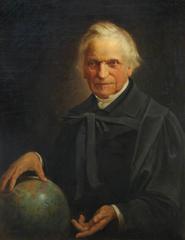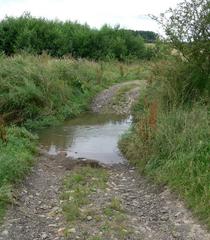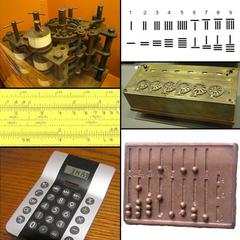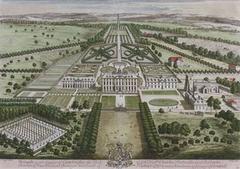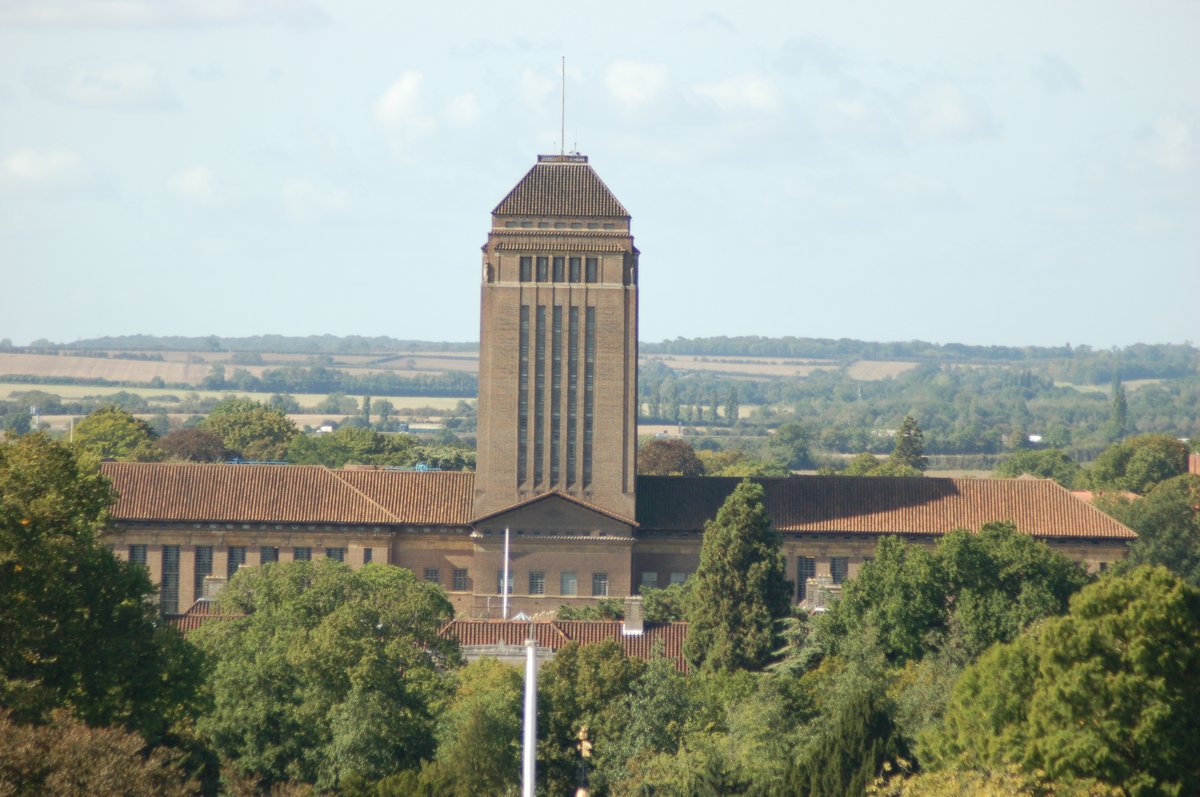
Cambridge University Library Visiting Hours, Tickets, and Visitor Guide
Date: 14/06/2025
Introduction: Cambridge University Library—A Beacon of Knowledge and Heritage
Nestled in the heart of Cambridge, the Cambridge University Library (UL) is not only one of the UK’s most significant repositories of knowledge but also a remarkable architectural and historical landmark. Since its foundation in the mid-14th century, the UL has grown from a modest collection into an international center of research, housing more than 8 million items—including rare manuscripts, maps, and archives that span over 3,000 years of global history. Its iconic 17-storey tower, designed by Sir Giles Gilbert Scott and completed in 1934, stands as a symbol of both academic excellence and innovative design.
Today, the library serves scholars, tourists, and history enthusiasts alike with free public exhibitions, guided tours, and a commitment to accessibility and digital innovation. Its central location on West Road makes it an essential stop for anyone exploring Cambridge’s cultural and academic heritage.
Discover more about the library’s history, visitor information, and current exhibitions on the official Cambridge University Library website and explore its digital resources through the Cambridge Digital Library.
Contents
- Introduction
- Historical Overview
- Architectural Significance
- Collections & Global Heritage
- Research & Digital Access
- Exhibitions & Public Engagement
- Visiting Information: Hours & Tickets
- Accessibility & Visitor Services
- Facilities & Amenities
- Guided Tours & Group Visits
- Nearby Attractions
- Getting There & Travel Tips
- Frequently Asked Questions (FAQ)
- Visuals & Media
- Stay Connected & Plan Your Visit
- Conclusion & Key Tips
- References
Historical Overview
The Cambridge University Library’s story began in the 14th century as a small collection of books stored in chests. By the 15th century, it had a dedicated space at the Old Schools. The library’s status was enhanced in 1710 when it became a legal deposit library, entitling it to a copy of every book published in the UK—a privilege that has fueled the growth of its vast collections.
Over the centuries, the UL has weathered periods of upheaval and change, including the challenges of the English Reformation. Its current home, opened in 1934, was a product of extensive debate and visionary planning, reflecting the university’s commitment to both tradition and innovation.
Architectural Significance
The present library building is a Grade II-listed structure and an outstanding example of interwar British architecture. Designed by Sir Giles Gilbert Scott, it masterfully combines modern construction techniques with traditional materials, resulting in an imposing yet functional space for both study and preservation (Purcell UK). The move from the Old Schools site to West Road in the 1930s was pivotal, allowing for expansion and the introduction of innovative features such as open bookstacks, which revolutionized reader access (Purcell UK).
Collections & Global Cultural Heritage
The UL’s collections are among the most important in the world (Cambridge UL Special Collections). Highlights include:
- Over 8 million books, manuscripts, and maps
- The oldest inscribed item: a Sumerian clay tablet from ~2200 BCE
- The Book of Deer: possibly Scotland’s oldest manuscript
- Archives of luminaries such as Charles Darwin, Isaac Newton, and Stephen Hawking (Cambridge News)
In recognition of its global significance, the Special Collections were awarded Designated status by Arts Council England, and Darwin’s archives are part of UNESCO’s International Memory of the World Register (Cambridge UL Special Collections).
Research, Innovation & Digital Access
The UL is at the forefront of research support and digital innovation. Through the Cambridge Digital Library, thousands of rare manuscripts and books are accessible worldwide. Recent investments have enhanced preservation and digitization capabilities, ensuring that unique materials remain available for future generations (Cambridge News).
The Conservation and Collection Care Department plays a crucial role in safeguarding these materials, while digital projects and volunteer transcription initiatives engage both scholars and the wider public.
Exhibitions, Public Engagement & Education
The library offers a dynamic program of exhibitions and events, drawing from its vast collections to highlight topics ranging from medieval medicine to translation and global exchange (Cambridge Digital Library Exhibitions). Many exhibitions are accessible online, broadening their reach. The UL’s educational mission is furthered through public talks, partnerships with societies, and digital humanities collaborations.
Visiting Information: Hours & Tickets
Opening Hours (as of June 2025)
- Monday – Friday: 9:00 am – 7:00 pm (some areas open later in term)
- Saturday: 9:00 am – 4:45 pm
- Sunday: Closed
Holiday hours may vary—always check the official opening hours before your visit.
Admission & Tickets
- Exhibitions: Free entry; no tickets required
- Reading Rooms & Collections: Registration required (free for all visitors aged 16+). Register online or in person; bring valid ID.
Guided Tours
- Free guided tours and orientation sessions are available throughout the year, covering library history, architecture, and collections. Book via the appointments calendar or email [email protected].
Accessibility & Visitor Services
The UL is committed to making its facilities accessible and inclusive:
- Step-free access and accessible study spaces
- Reserved parking for blue badge holders (call ahead to confirm)
- Assistance dogs welcome
- Accessible restrooms and seating
- Personalized support—contact Libraries Accessibility Service for help
Facilities & Amenities
- Lockers & Cloakroom: All bags and coats must be stored in the free Locker Room before entering main areas.
- Refreshments: Vending machines in the Locker Room; several cafés are nearby in the city centre.
- Wi-Fi: Free for all visitors; University members use Eduroam, others can request guest access.
- Restrooms: Accessible facilities on the ground floor.
- Study Spaces: Reading rooms, private and group study spaces (some bookable); see library guidelines.
Guided Tours, Special Events & Group Visits
- Group Visits: Schools and special interest groups should arrange visits in advance via [email protected] or +44 (0) 1223 333000.
- Public Events: Check the exhibitions page and social media for upcoming talks and events.
Navigating the Library: Spaces & Exhibitions
- Milstein Exhibition Centre: Main venue for major displays, fully wheelchair accessible.
- Entrance Hall Cases: Rotating mini-exhibitions viewable during opening hours.
- Special Collections: Direct access is restricted, but selections are regularly featured in public exhibitions.
- Photography: Generally not permitted inside; always check signage and staff instructions.
Nearby Attractions
Enhance your visit by exploring other Cambridge highlights:
- Fitzwilliam Museum
- King’s College Chapel & historic colleges
- The Backs (scenic riverside gardens)
- Cambridge Botanic Garden
For more ideas, visit Visit Cambridge.
Getting There & Travel Tips
- Address: Cambridge University Library, West Road, Cambridge CB3 9DR, UK
- By Bicycle: Ample bike parking; see CycleStreets.
- By Bus: ‘Uni 4’ and park & ride routes serve West Road (Cambridgeshire transport).
- By Train: From Cambridge railway station, walk, cycle, or take a taxi/bus.
- By Car: Limited pay-and-display parking; blue badge holders should call ahead.
For full details, see location information.
Frequently Asked Questions (FAQ)
Q: What are the Cambridge University Library visiting hours?
A: Monday–Friday 9:00 am–7:00 pm, Saturday 9:00 am–4:45 pm, closed Sundays (check official hours for updates).
Q: Do I need tickets?
A: No tickets for exhibitions; registration required for access to reading rooms and collections.
Q: Are guided tours available?
A: Yes, free guided tours and orientations are offered year-round. Book in advance.
Q: Is the library accessible?
A: Yes, with step-free access, accessible restrooms, parking, and personalized support.
Q: Can I bring food or drinks?
A: Only bottled water allowed inside; food and other drinks in designated areas only.
Q: Can tourists access the library’s collections?
A: Yes, by registering as visitors, though borrowing privileges are limited.
Q: Can I take photos inside?
A: Photography is generally restricted; ask staff for permission.
Visuals & Media
Explore images and virtual tours of the UL, exhibitions, and historic architecture at the Cambridge Digital Library. Suggested alt text for images: “Cambridge University Library tower,” “Inside Milstein Exhibition Centre,” “Rare manuscripts at Cambridge University Library.”
Stay Connected & Plan Your Visit
For the latest updates, events, and resources, subscribe to the library’s newsletters and follow on social media.
Conclusion & Key Tips
Cambridge University Library is more than a repository—it’s a living institution where scholarship, heritage, and public engagement converge. With extensive collections, free exhibitions, guided tours, and accessible facilities, the UL is a must-visit destination in Cambridge. Plan ahead, register for access, and make the most of your visit by exploring nearby attractions and engaging with digital resources.
Download the Audiala app for audio guides and interactive features to enrich your experience, and check out related articles on Cambridge’s historical sites and libraries.
References
- Visiting Cambridge University Library: Hours, Tickets, History, and Travel Tips, 2025, Cambridge University Library (https://www.lib.cam.ac.uk/)
- Cambridge University Library Visiting Hours, Tickets, and Historical Significance, 2025, Purcell UK and Cambridge University Library Special Collections (https://www.purcelluk.com/projects/cambridge-university-library/)
- Cambridge University Library Visiting Hours, Tickets, and Historical Significance, 2025, Cambridge News (https://www.cam.ac.uk/topics/Cambridge-University-Library)
- Cambridge University Library Visiting Hours, Tickets, and Practical Tips for Visitors, 2025, Cambridge University Library (https://www.lib.cam.ac.uk/full-opening-hours)
- Visiting Cambridge University Library: Hours, Exhibitions, and Travel Tips for Exploring Cambridge’s Historical Landmark, 2025, Visit Cambridge (https://www.visitcambridge.org/)
